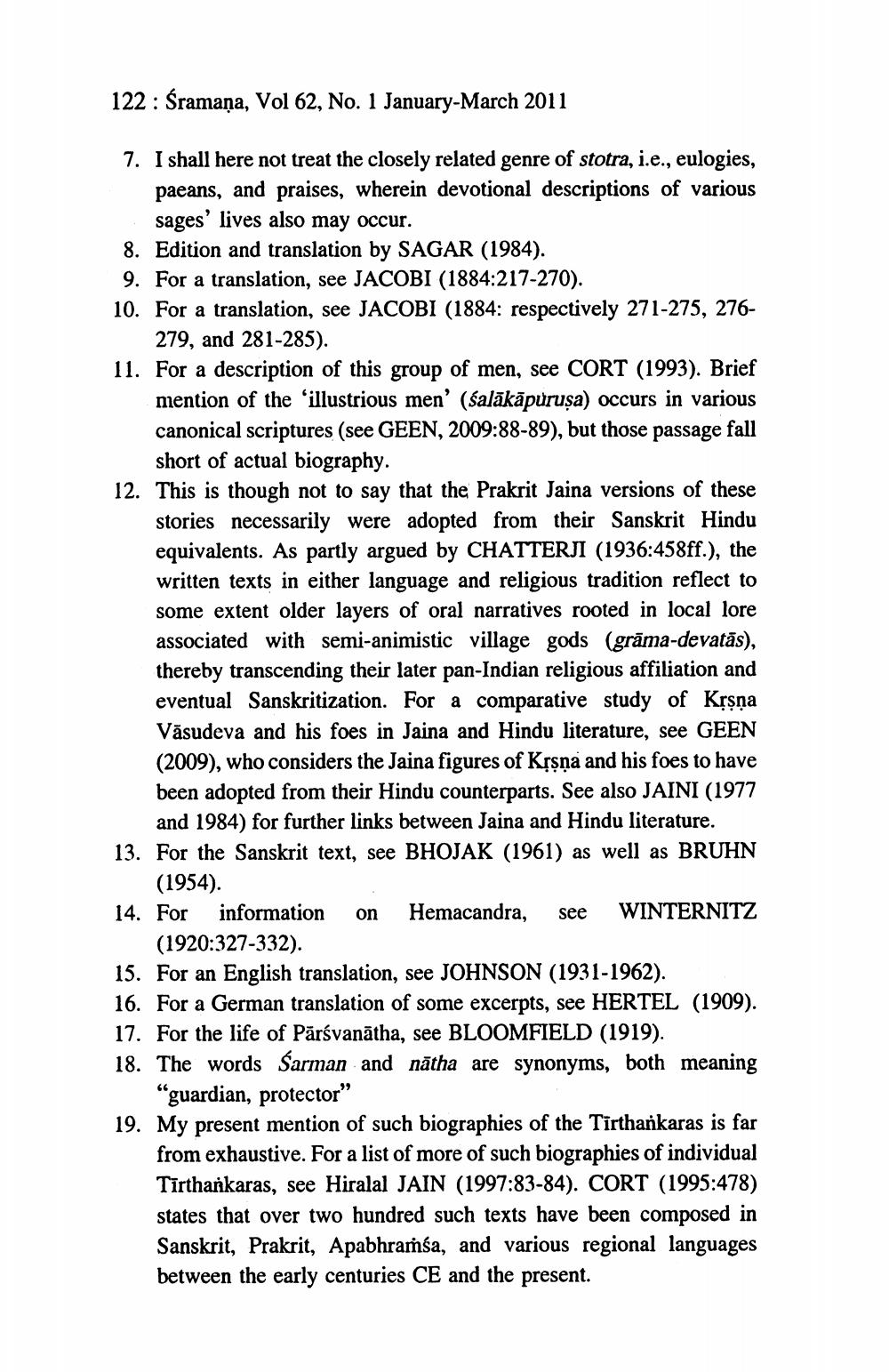________________
122: Śramaņa, Vol 62, No. 1 January-March 2011
7. I shall here not treat the closely related genre of stotra, i.e., eulogies,
paeans, and praises, wherein devotional descriptions of various
sages' lives also may occur. 8. Edition and translation by SAGAR (1984). 9. For a translation, see JACOBI (1884:217-270). 10. For a translation, see JACOBI (1884: respectively 271-275, 276
279, and 281-285). 11. For a description of this group of men, see CORT (1993). Brief
mention of the 'illustrious men' (salākāpuruṣa) occurs in various canonical scriptures (see GEEN, 2009:88-89), but those passage fall
short of actual biography. 12. This is though not to say that the Prakrit Jaina versions of these
stories necessarily were adopted from their Sanskrit Hindu equivalents. As partly argued by CHATTERJI (1936:458ff.), the written texts in either language and religious tradition reflect to some extent older layers of oral narratives rooted in local lore associated with semi-animistic village gods (grāma-devatās), thereby transcending their later pan-Indian religious affiliation and eventual Sanskritization. For a comparative study of Krsna Vāsudeva and his foes in Jaina and Hindu literature, see GEEN (2009), who considers the Jaina figures of Kęsņa and his foes to have been adopted from their Hindu counterparts. See also JAINI (1977
and 1984) for further links between Jaina and Hindu literature. 13. For the Sanskrit text, see BHOJAK (1961) as well as BRUHN
(1954). 14. For information on Hemacandra, see WINTERNITZ
(1920:327-332). 15. For an English translation, see JOHNSON (1931-1962). 16. For a German translation of some excerpts, see HERTEL (1909). 17. For the life of Pārsvanātha, see BLOOMFIELD (1919). 18. The words Sarman and nātha are synonyms, both meaning
"guardian, protector" 19. My present mention of such biographies of the Tīrthankaras is far
from exhaustive. For a list of more of such biographies of individual Tīrthankaras, see Hiralal JAIN (1997:83-84). CORT (1995:478) states that over two hundred such texts have been composed in Sanskrit, Prakrit, Apabhraíśa, and various regional languages between the early centuries CE and the present.




